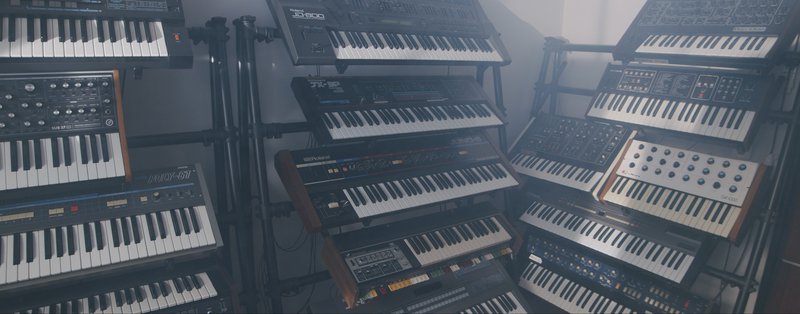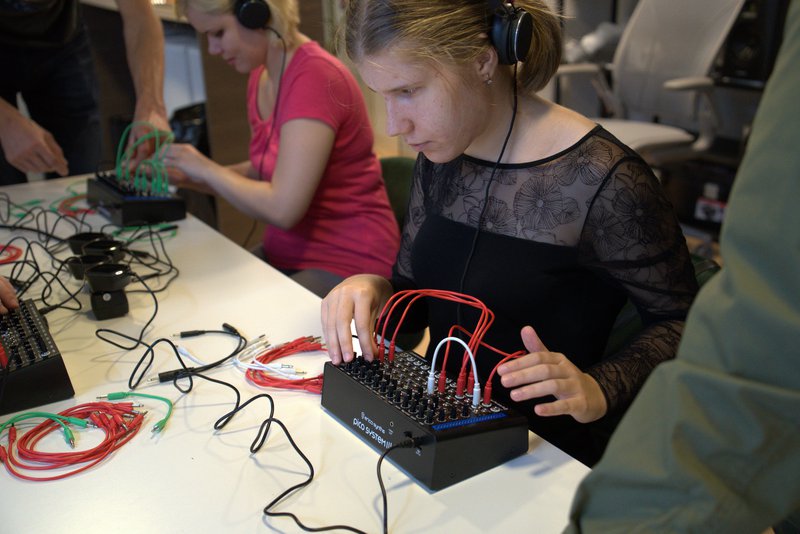Serious visual impairment or blindness is not a fringe case. And yet, a lot of electronic music technology is designed as if everyone has perfect vision. From Riga, Latvia, here’s an effort to change that attitude – and support those musicians.
It’s a shame ableism is so common in music technology, because it’s a field that could be central to understanding design for different abilities. Few interactions are as fundamental as using physical input to express yourself in sound – back to some of the earliest human technologies.
So why wait? Let’s start now. Fenestra comes our way from our friends at Erica Synths in Riga, Latvia. It’s a project of the non-governmental organization Artes Liberales.
And now it’s off and running – believe it or not, in actual physical space, even in the midst of the pandemic. T Studio, the biggest studio equipment purveyor of the Baltics, has set up the project as the Synthlab, a home for classic synths.

I hope to talk to some of the artists and organizers, but figured why not go ahead and share what they’ve been up to so far (and see if you have any questions or comments).
On 5th of September, Erica Synths organized the first-ever Fenestra workshop at Synthlab. Four visually impared musicians from Latvia came to check out their Pico System III. Mario led the effort; he’s himself a visually impaired musician who’s a DJ, trumpet player, and modular synth expert. Everybody went home with their own Pico System, too. Here’s how that went:
One first workshop, tons of exceptionally awesome music
More:
Pico System III workshop in Synthlab [Fenestra blog]
To get a sense of what it’s like making music in complete darkness – without any light perception at all – read this 2007 profile of Darkside, aka Aleksei Brjantsev:
Meet The Blind Synthesist Making Estonia’s Underground Dance [Electronic Beats]
Also, as a writer, thank Aleksei for being someone who will RTFM:
One of my favorite things to read is synthesizer manuals. I really like reading them when something new comes out. Some of the demo videos you find online are too vague or emotional, but if you get the manual from the manufacturer’s site then it’s a completely different story. Most people don’t usually like to be bombarded with details, but because I have Asperger’s, it’s the opposite since the condition allows me to learn menus by heart. I think that’s where it comes to my advantage.
Preach.
Mario joined Darkside in 2019 to play live at the Erica Synths Garage. [Details on those gigs also on Fenestra’s site.] (Hey, I guess YouTube’s embedded player is properly accessible to screen readers? Good question…)
Darkside of course did a live set to accompany his workshop last month; that’s up now, too:
Music tech journalist and musician Ian Waugh has also developed a visual impairment and talked to Erica’s Eliza Aboltina about what that has meant for his work:
The impact of developing a visual impairment for a music technology professional
It’s time to stop thinking of this as an edge case
“Raising awareness” is usually a poor replacement for action, but in the case of accessibility and electronic music, just overturning misconceptions may well be a strong first step.
I wrote last year for Native Instruments’ blog about their work on incorporating accessibility into their work. I think the single most important takeaway from that story was that one in twenty users of Komplete Kontrol took advantage of new features for visual impairment. One in twenty is a group that’s big enough that even a garage-sized instrument maker can start to think about accessibility as part of their customer base, let alone major manufacturers. That story:
Designing for the visually impaired
We really hoped at the time that some of these discussions would be more widely heard in our industry.
The worldwide numbers are bigger than many people think. Fenestra says in their press release that some 1.3 billion people worldwide live with some form of vision impairment. Of those, 217 million have severe vision impairment. 36 million are blind – that’s roughly the population of Saudi Arabia or Poland, or metro Tokyo. It’s a lot.

Plus, in this year when health is suddenly on everyone’s mind, it’s worth noting that your vision abilities can change. Imagine losing access to your favorite instruments.
As NI reported, very often making changes to accommodate visually impaired and blind users also made designs that worked better for everyone else. It’s an investment that wins for everyone.
And music has a special interest in all this. Fenestra also tells us that blind children are 4,000 times more likely to have perfect pitch, and are several times more likely to play an instrument and take interests in everyday sounds. (Well, of course.)
It’s great to see this effort happening in Latvia – but I hope it spurs a global conversation. And it’s clear we can have conversations involving both sighted and non-sighted musicians and learn how to make our instruments more playable.
For their part, Fenestra are taking donations – including instrument donations – and inviting support in their efforts. But that’s just one location, so we’re definitely keen in hearing how you’re working on this, how non-sighted and visually impaired artists are coping with all this tech, and what we can all do to work together.
Meanwhile, here’s the Fenestra site to learn more:
Still more music – check Pauline Anna Strom’s wonderful album, then read up on her work with links to plenty of articles about what she’s doing:
Check Tartu’s Darkside on SoundCloud: